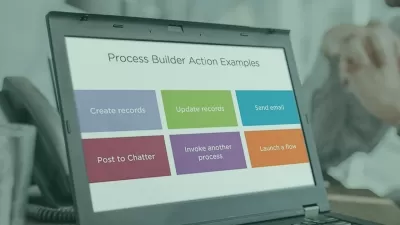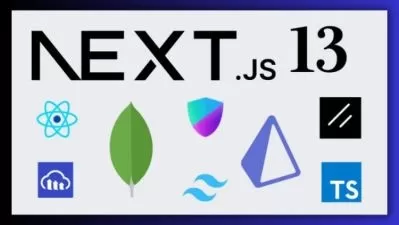MuleSoft Certified Integration Architect Course - MCIA
Chinna Reddy
19:08:07
Description
Practical approach to became MuleSoft integration architect and clear MCIA certification.
What You'll Learn?
- Key concepts of Mulesoft's Integration Architecture
- 100% Readiness for MuleSoft Certified Integration Architect (MCIA) Exam
- Should be able to drive an organization’s Anypoint Platform implementation, technical quality, governance, and operationalization of the integration solutions.
- Should be able to choose right integration patterns
- Should be able to create the high-level design of integration solutions and guide implementation teams on the choice of Mule components and patterns.
- Should be able to select the deployment approach and configuration of deployment options (MuleSoft-hosted or customer-hosted control plane and runtime plane).
- Should be able to design Mule applications for any of the available deployment options of the Anypoint Platform runtime plane
- Should be able apply standard development methods covering the full development lifecycle to ensure solution quality.
- Should be able to advise technical teams on performance, scalability, reliability, monitoring and other operational concerns of integration solutions.
- Should be able design reusable assets, components, standards, frameworks, and processes to support and facilitate API and integration projects
Who is this for?
More details
DescriptionHello Viewers -
I am Chinna Reddy, Technical Architect. I am passionate about sharing my experience and skills in Integration Design and Technical Architecture using Mule ESB.
Practical approach to became MuleSoft integration architect and clear MCIA certification.
Key concepts of Mulesoft's Integration Architecture.
100% Readiness for MuleSoft Certified Integration Architect (MCIA) Exam.
Should be able to drive an organization’s Anypoint Platform implementation, technical quality, governance, and operationalization of the integration solutions.
Should be able to choose right integration patterns.
Should be able to create the high-level design of integration solutions and guide implementation teams on the choice of Mule components and patterns.
Should be able to select the deployment approach and configuration of deployment options (MuleSoft-hosted or customer-hosted control plane and runtime plane).
Should be able to design Mule applications for any of the available deployment options of the Anypoint Platform runtime plane.
Should be able apply standard development methods covering the full development lifecycle to ensure solution quality.
Should be able to advise technical teams on performance, scalability, reliability, monitoring and other operational concerns of integration solutions.
Should be able design reusable assets, components, standards, frameworks, and processes to support and facilitate API and integration projects.
The course is in-depth and adds a lot of value to your career to reach next levels. Thank you.
Who this course is for:
- Organizations if you are new to MuleSoft and would like onboard MuleSoft to your organization
- Senior Developers, Architects and Aspiring Architects are best fit for this course
- Anyone who are preparing to take Mulesoft Certified Integration Architect exam
Hello Viewers -
I am Chinna Reddy, Technical Architect. I am passionate about sharing my experience and skills in Integration Design and Technical Architecture using Mule ESB.
Practical approach to became MuleSoft integration architect and clear MCIA certification.
Key concepts of Mulesoft's Integration Architecture.
100% Readiness for MuleSoft Certified Integration Architect (MCIA) Exam.
Should be able to drive an organization’s Anypoint Platform implementation, technical quality, governance, and operationalization of the integration solutions.
Should be able to choose right integration patterns.
Should be able to create the high-level design of integration solutions and guide implementation teams on the choice of Mule components and patterns.
Should be able to select the deployment approach and configuration of deployment options (MuleSoft-hosted or customer-hosted control plane and runtime plane).
Should be able to design Mule applications for any of the available deployment options of the Anypoint Platform runtime plane.
Should be able apply standard development methods covering the full development lifecycle to ensure solution quality.
Should be able to advise technical teams on performance, scalability, reliability, monitoring and other operational concerns of integration solutions.
Should be able design reusable assets, components, standards, frameworks, and processes to support and facilitate API and integration projects.
The course is in-depth and adds a lot of value to your career to reach next levels. Thank you.
Who this course is for:
- Organizations if you are new to MuleSoft and would like onboard MuleSoft to your organization
- Senior Developers, Architects and Aspiring Architects are best fit for this course
- Anyone who are preparing to take Mulesoft Certified Integration Architect exam
User Reviews
Rating
Chinna Reddy
Instructor's Courses
Udemy
View courses Udemy- language english
- Training sessions 99
- duration 19:08:07
- Release Date 2022/12/24
















